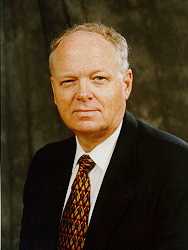|
Performance Practice For more information about Dr. Anderson, visit his faculty web site. Or you may contact him via email. |
Introduction Renaissance Baroque Classical Romantic
|
Melodies tend to be divided into regular periods and shorter motives than Baroque themes. |
Voices & Instruments
Particular instruments and voicings are much more clearly specified than in earlier periods.
Church music and opera were last to give up use of continuo; not usually necessary in symphonic works.
Larger choral ensembles than instrumental ensembles now appropriate.
Most modern instruments used (except trumpet).
Problems of Notation
Ready access to Urtext editions have simplified many of our problems.
Scholars are unsure whether the practice of overdotting should continue.
Ornamentation & Improvisation
Ornamentation is usually written out in notes or conventional signs from the Baroque.
Improvisation is generally limited to cadenzas.
Ornamentation practice of late Baroque is generally appropriate for most music of this period.
Tempo
Harmonic rhythm slows down; compositional conception changes from movement by beat to more movement by bars.
Mozart was noted for his performances at a very fast tempo.
Used Italian tempo terms, yet they were not perceived as absolute tempo designations, but rather carried further meanings:
a. andante (walking, not slow)
b. allegro (cheerful, not just fast)
c. vivace (lively, not just very fast)Evidence does exist that supports the subtle use of rubato during the Classical Period as well as the period that followed; it is described as allowed in the melody only while the accompaniment remains strict!
Phrasing, Articulation, Dynamics
Music can be significantly altered by one's concept of sub phrases and phrase division points: (note verbal example):
"He lost his family not, only his property. He lost his family, not only his property."Writers recommend the shortening of the last note of a phrase to separate it from the start of the next.
Non ending legato melody lines (as seen in late Romantic Period) need to be divided into shorter interlocking sub phrases.
Dynamics are specified much more and crescendi and decrescendi of restrained proportions are appropriate.
| If you would like to be added to the TSMP Email Mailing List and receive periodic notifications of new articles and updates to this website, then please email TSMP.
The Texas School Music
Project is a source for ideas and information
concerning pedagogical
practices in the music classroom or rehearsal hall. The TSMP is a service provided to
all music specialists by the faculty
of
the Department of Music
at Stephen F. Austin State University. Copyright © 2002, Department of Music at Stephen F. Austin State University |
